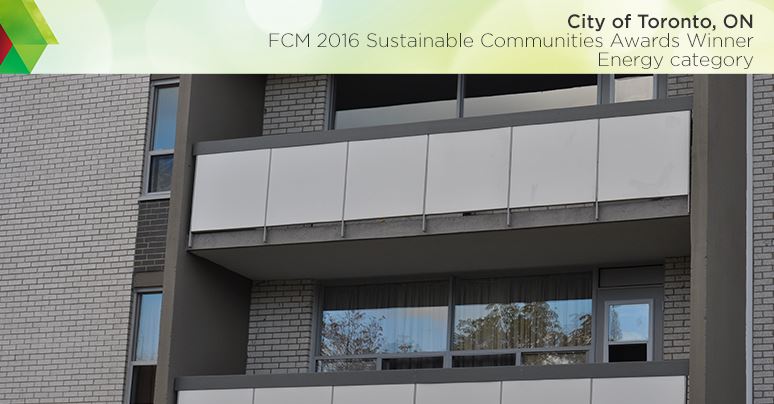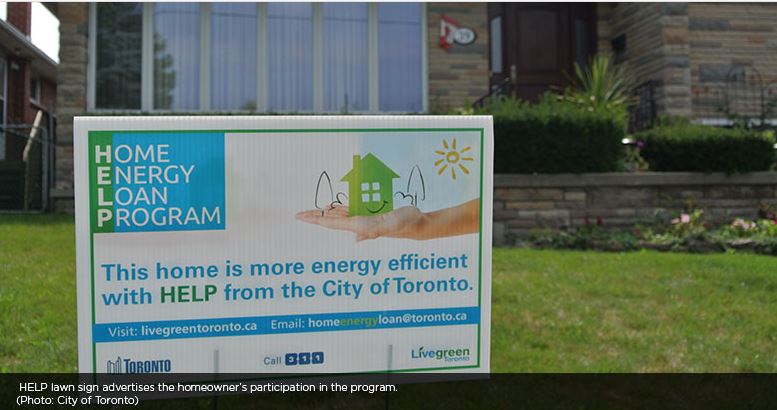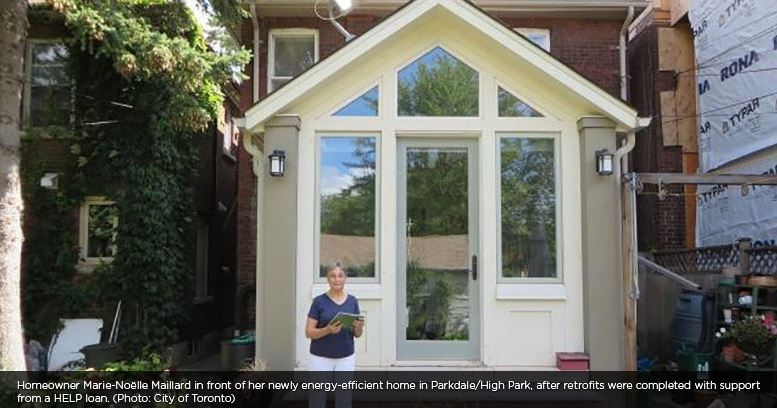WINNER: City of Toronto, ON
The City of Toronto's Home Energy Loan Program (HELP) and High-Rise Retrofit Improvement Support Program (Hi-RIS) have won a 2016 FCM Sustainable Communities Award for successfully stimulating energy and water retrofits in privately owned residential buildings. To date the programs have achieved energy savings of 25 per cent and 28 per cent respectively through long-term, low-interest loans to finance energy and water efficiency retrofits.
Read the case study below to learn more about the program results, as well as the challenges and lessons learned that can help your community in planning a similar program.
About the project
| Municipal population | Project duration | Total project value |
|---|---|---|
|
|
|
Buildings account for about half of Toronto's overall greenhouse gas emissions. To increase energy efficiency in privately owned residential buildings, Toronto is taking advantage of recent changes to Ontario's Local Improvement Charge (LIC) regulations, allowing municipalities to use LICs as loans to finance energy retrofits on private property.
The first programs of their kind in Ontario, the HELP and Hi-RIS programs are innovative financing tools that support energy and water efficiency retrofits on private residential properties. The city leverages its borrowing power to offer low-interest, long-term loans that cover the upfront costs of improvements. Owners repay the city over time through installments on their property tax bill. Loans are attached to the property rather than the owner, so that if a property is sold, the loan transfers to the new owner, along with the energy savings.
HELP is geared toward single-family homeowners, while Hi-RIS operates as part of the city's Tower Renewal Program and focuses on older apartment buildings. Collaboration with Toronto Hydro and Enbridge Gas ensures linkages with existing conservation incentives.
"The programs run through a Local Improvement Charge that allows you to borrow against the future savings and then have it paid back connected to the property rather to the individual, which is key to the programs' success."
— Councillor Mike Layton
Project Highlights
Results
| Environmental | Economic | Social |
|---|---|---|
|
|
|
Challenges
- The city needed to work closely with financial institutions to develop a mortgage lender consent process for this new type of financing tool.
- Due to longer timelines required for many improvement projects at multi-residential buildings, there is a potential that some property owners may alter the improvements that they implement or fail to complete part of the project after the Property Owner Agreement is executed. Program guidelines are designed to accommodate factors such as changes to improvements, and a protocol has been developed to maintain regular communication with property owners before and after the Property Owner Agreement is signed.
- For multi-residential building property owners with larger portfolios, owners may choose not to participate if the interest rate offered by the city is not competitive enough compared to market rates for conventional loans.
- Education is required to help people understand this new financing model. As the first municipality in Ontario to use this model, the city cannot point to other examples to demonstrate how it works.
Lessons learned
- Clearly identify the target market to position the program successfully and encourage uptake.
- Promote the broad range of co-benefits to reach audiences with different interests. For example, some may be most interested in reducing energy bills or improving home comfort, while others could be more concerned with environmental stewardship.
- Leverage the communication networks of utilities, local distribution companies, retrofit contractors, energy advisors, equipment manufacturers, community groups, industry associations and realtors, to promote the program widely.
- Engage all relevant city departments in setting up the program, to coordinate and streamline its administration and ensure that the program meets all regulatory requirements.
- Set up a one-window approach to customer service.
More information
Marco Iacampo, Supervisor, Environment and Energy Division
City of Toronto, Ontario
T. 416-392-6063
Aderonke Akande, Project Manager, Tower and Neighbourhood Revitalization
City of Toronto, Ontario
T. 416-397-5257
Want to explore all GMF-funded projects? Check out the Projects Database for a complete overview of funded projects and get inspired by municipalities of all sizes, across Canada.




